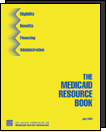Public and private sector organizations are involved in a number of activities that seek to reduce cultural and communication barriers to health care. These activities are often described as cultural competency and/or cross-cultural education. A recent Institute of Medicine report recommended that the health care system pursue several of these techniques as part of a multi-level strategy to reduce racial and ethnic disparities in medical care. To address this need, the Henry J. Kaiser Family Foundation has developed a compendium, as a first attempt to describe these activities in a single document. The compendium was prepared in response to the many requests from the media and others to define cultural competency and identify efforts underway in this emerging field.
The initiatives included in the compendium are from 1990 to the present and it is divided into two categories: Public Sector Initiatives (Federal/state/local) and Private Sector Initiatives (health care institutions or professional organizations, foundations, academic institutions/policy research organizations, and other). This resource also includes brief definitions for the major terms, organizational descriptions of initiatives and a list of experts in the field.
